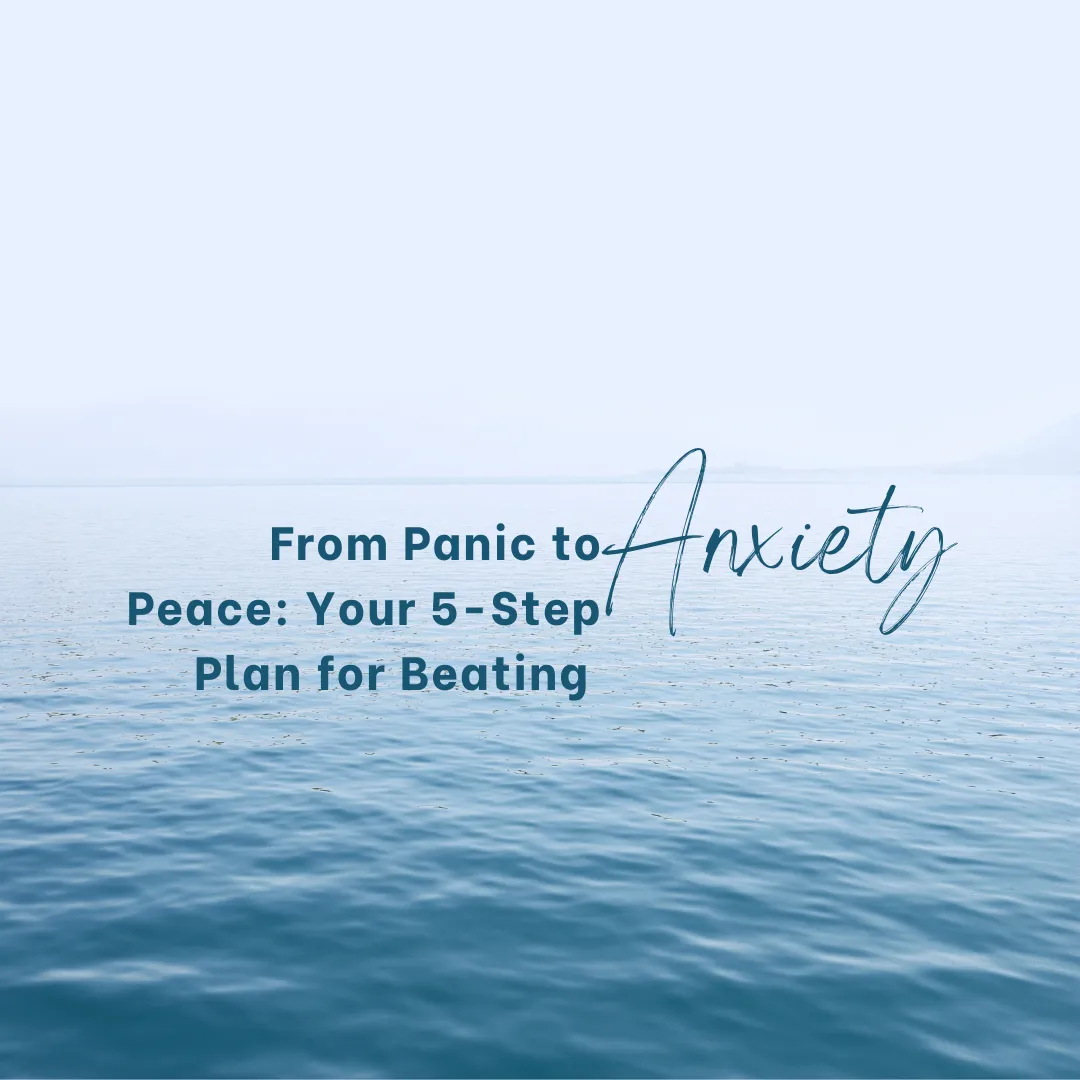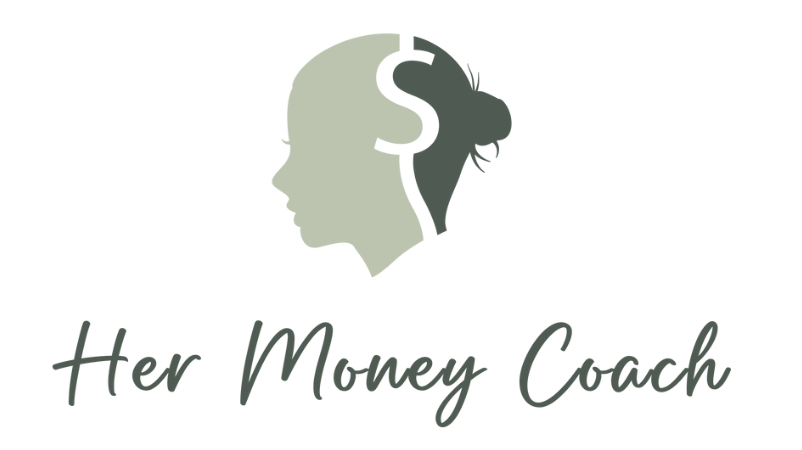
From Panic to Peace: Your 5-Step Plan for Beating Anxiety
"Anxiety isn't you. It's something moving through you. It can leave out the same door it came in.” - James Clear
You know those thoughts that jolt you awake at 3 am, screaming that your business is tanking and you're a hop away from ruin? They morph into this whole big deal if you let them. And, I left them. These come with friends, that gnarly feeling in your gut, twisting and turning, or maybe for you, it's that weight on your chest making it hard to breathe.
Here's the thing, though - it all boils down to the fact that consciously or not, our thoughts spark those feelings. When we ignore them, they just keep popping back up like those guests who just won't leave.

That's exactly where I found myself. Resisting, pushing it all away because, honestly, feeling that way? No thanks. But the more I resisted, the worse it got. I tried everything - talking myself down, pretending it was all good. Spoiler alert: it was anything but good.
Here I was, having poured over two years into my dream - a family business - only to lose it, along with my home and nearly a million bucks. Night after night, like clockwork at 3 am, anxiety decided to move in for good.
With all my years as a tech leader and real estate investor, I’d had many ups and downs - squatters, eviction nightmares, but this? This was a whole new level of knocked down with no clear path back up.
Driven by sheer desperation, I dove headfirst into everything I knew about positive psychology, neuroscience, and resilience. I read endless books on bouncing back from failure and tackling anxiety head-on.
I had to get my sleep back. I had to confront that sneaky thief showing up at 3 am. That's when I started using what I call the ACCEPT framework.
Acknowledge that you're feeling anxious
Check in with your thoughts
Check in with your body
Exhale, focus on breathing
Pat yourself on the back
Talk out loud
Racing through these steps, I hoped to find my sleep again. But it wasn't just for those sleepless nights. When I was selling my house to pay the SBA loan, clueless about what was to come next, I leaned on ACCEPT then too. Here's the breakdown of facing anxiety, whether at 3 am or in the throes of any of life's curveballs.
So, starting with "A" - Acknowledge that I'm feeling anxious. Honestly, getting my head around this was tough. I used to think if I actually admitted I was anxious, it'd pull me in deeper, like I'd be stuck in quicksand forever.
But there’s actually science that says that facing up to your anxiety, instead of ignoring it, is way healthier and actually helps you manage it better. There's a term called "affective labeling" - fancy name, but it's basically just naming what you're feeling. And doing this can actually dial down how intense the emotion feels. Seriously, scientists have looked at brain scans and seen that when you name your emotions, it lights up the part of your brain that helps keep your fear in check.
Sounds like it's straight out of a science textbook, right? But it's actually pretty straightforward. Just tell yourself, "Hey, I recognize this feeling. I'm anxious, scared, lonely... whatever it is. Just name it and own it."
Next, “C”, check in with your thoughts. It's crucial because, let's be honest, our thoughts can be real tricksters. Not everything swirling around in our heads is the truth. We've got something like 80,000 thoughts a day, and a lot of them lean towards the negative. That's just how our brains are wired, thanks to this thing called "negativity bias." Basically, we're programmed to remember the bad stuff more than the good, a little souvenir from our ancestors who needed to stay sharp to dodge danger.
Now, why bother checking in? Because our brains are also pretty amazing at changing - that's called neuroplasticity. By taking a moment to sift through our thoughts, figuring out what's actually true and what's just fear talking, we can start to shift those patterns. Turning negative thoughts into positive ones isn't just feel-good advice; it's a proven way to dial down anxiety over time.
Alright, “C” for check in with your body. How our body holds onto emotions is super interesting. Think about it this way: every thought we have can trigger a feeling in our body, kind of like how a scary movie gets your heart racing. Scientists say that paying attention to these physical feelings can actually help us handle anxiety better. It’s about getting to know how emotions are more than just something in your head; they're also about what you feel physically.
There are therapies out there that really focus on this mind-body connection. They believe that our toughest emotions can get stuck in our body. Ever heard of “somatic awareness”? It’s this idea that by tuning into and releasing these pent-up emotions, we can feel a whole lot better. How do I do it? Well, I get curious. I try to describe what the anxious feeling is like – is it a cold feeling, a fast feeling, is it sitting still or moving around? For me, those 3am anxiety moments usually feel like a heavy pit in my stomach, or sometimes it creeps up to my throat. It’s often this heavy, gray feeling. But here's the amazing part: just by paying attention to it, really observing it, I start to notice it changing, moving. And somehow, that makes the intensity decrease a bit, and I start feeling a bit lighter.
“E” is for exhale, remember to breathe, especially when stress hits hard, like it did for me during my business flop. I'd find myself holding my breath without even realizing it. Breathing, though, is like a magic trick for snapping back to the present and finding your ground. I've tried a bunch of breathing techniques, but the one I keep coming back to is called "box breathing." Super simple and straightforward.
Think of it as drawing a square in the air with your breath. Here’s the breakdown:
Inhale: Start by letting all your air out. Then, take a slow, deep breath through your nose, counting to four. Imagine filling up your lungs from the bottom all the way to the top.
Hold: Keep that breath in for another count of four. No need to tense up; just keep things chill and don’t breathe in or out.
Exhale: Now, let that breath out through your mouth, slow and steady for a count of four. Try to get all the air out, really engage your core.
Hold Again: Pause for four seconds before you take your next breath.
Do this a few times, and you’ll notice a shift, a kind of calmness and focus. Box breathing is awesome because it gets more oxygen flowing, dials down your heart rate, and helps level out your blood pressure.
One of my favorites, “P” for give yourself a big pat on the back, or even a hug. Sounds simple, right? But it's actually grounded in some pretty solid psychology. It's all about showing yourself a bit of love and kindness, which can really turn the tide on anxiety.
So, picture this: It's 3 am, and anxiety's got me all twisted up. What do I do? I curl up and hug myself tight. It's my way of saying, "Hey, it's going to be alright. I've got me." Sometimes, I even imagine giving a comforting hug to my 4-year-old self, giving loving reassurances that everything's going to be okay.
Believe it or not, hugging yourself does more than just feel good. It kicks off this whole chemical reaction in your body, releasing oxytocin, also known as the "cuddle hormone." This stuff is great for dialing down stress hormones like cortisol and bringing your blood pressure down, easing that anxious feeling. So next time you're feeling overwhelmed, don't forget to show yourself some love and wrap yourself in a big, comforting hug.
Last, but not least “T” talk out loud. Talking with yourself, especially dropping some positive vibes, is like a secret weapon against anxiety. It's all backed up by Cognitive Behavioral Therapy (CBT). CBT's a big deal in the therapy world because it's all about catching those sneaky negative thoughts and flipping them on their head.
When you start saying positive things out loud, like “I’ve got this” or “Things will work out,” it’s not just pep talk. You’re actually rewiring your brain, fighting back against those doom-and-gloom thoughts. Saying these things out loud makes them feel real, solid, and somehow more doable. It’s like taking back the reins when anxiety's trying to run wild with your peace of mind.
And me? When I’m all curled up, giving myself a comforting hug at 3 am, I don’t just stop there. I say out loud, “Everything’s gonna be okay,” “There’s a plan for me,” or “I’ve tackled tough stuff before, I can do it again.” Positive affirmations are my jam. They fit right in with the self-hug, making a killer combo to beat back those 3 am anxiety monsters.
When anxiety knocks, and it's not in the wee hours of the morning, shaking things up with a bit of movement is a life saver. My personal favorite? A walk in nature. There's this spot, a bluff I love, with views of mountains and the city that just soothes my soul. And if I can't make it there, just a quick 10-minute stroll outside my door does wonders. The combo of physical activity and being surrounded by nature is like a double shot of calm for your system.
And let's talk about turning up the heat with a sweat session. I'm all about those high-energy, 15-minute HIIT workouts. Jumping on my Peloton, alternating between full throttle and cooling down every 30 seconds – it's exhilarating. Trust me, working up a sweat is more than just a physical cleanse; it's scientifically proven to dial down those stress hormones, adrenaline and cortisol, cutting down your overall stress and anxiety levels. So, next time anxiety decides to visit, why not hit the road or the mat? It's a solid move for your mind and body.
In conclusion, the ACCEPT framework is a handy way to manage those anxious moments. It blends science supported strategies that address both the mind and body. By acknowledging anxiety, checking in with our thoughts and bodies, practicing mindful breathing, offering ourselves compassion and reassurance, and affirming our strength and resilience out loud, we can navigate through moments of anxiety with greater ease and effectiveness.
This method not only helps in the middle of the night when anxiety tries to steal away our sleep but also during the day when challenges arise. Embracing these practices can lead to a more balanced emotional state, improved coping skills, and a deeper connection to oneself. Whether facing a stressful event like a business setback like I did, or if your just navigating the ups and downs of daily life, the ACCEPT framework serves as a powerful reminder of our ability to confront and manage anxiety, empowering us to lead a more peaceful and resilient life.
Legal Disclaimer: This content is not financial advice and is for informational purposes only. Always consult with a qualified financial professional before making any financial decisions.
